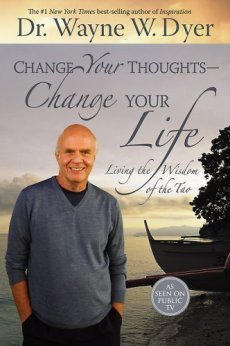
Change Your Thoughts – Change Your Life – Dr. Wayne W. Dyer
(Buy from Amazon; Buy from The Book Depository)
Five hundred years before the birth of Jesus, a God-realized being named Lao-tzu in ancient China dictated 81 verses, which are regarded by many as the ultimate commentary on the nature of our existence. The classic text of these 81 verses, called the Tao Te Ching or the Great Way, offers advice and guidance that is balanced, moral, spiritual, and always concerned with working for the good.
In this book, Dr. Wayne W. Dyer has reviewed hundreds of translations of the Tao Te Ching and has written 81 distinct essays on how to apply the ancient wisdom of Lao-tzu to today’s modern world. This work contains the entire 81 verses of the Tao, compiled from Wayne’s researching of 10 of the most well-respected translations of text that have survived for more than 25 centuries. Each chapter is designed for actually living the Tao or the Great Way today. Some of the chapter titles are “Living with Flexibility,” “Living Without Enemies,” and “Living by Letting Go.” Each of the 81 brief chapters focuses on living the Tao and concludes with a section called “Doing the Tao Now.”
Wayne spent one entire year reading, researching, and meditating on Lao-tzu’s messages, practicing them each day and ultimately writing down these essays as he felt Lao-tzu wanted you to know them.
This is a work to be read slowly, one essay a day. As Wayne says, “This is a book that will forever change the way you look at your life, and the result will be that you’ll live in a new world aligned with nature. Writing this book changed me forever, too. I now live in accord with the natural world and feel the greatest sense of peace I’ve ever experienced. I’m so proud to present this interpretation of the Tao Te Ching, and offer the same opportunity for change that it has brought me.”
Disclaimer: This page contains affiliate links that may provide monetary compensation to help support the Whole Guidance Vision of Creating a Happy and Healthy Planet should you make a purchase. We very much appreciate and thank you for your support.
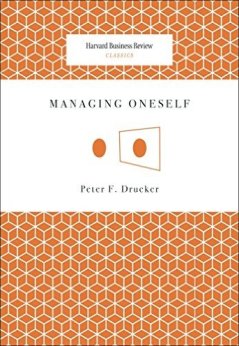
Managing Oneself – Peter F. Drucker
(Buy from Amazon; Buy from The Book Depository)
We live in an age of unprecedented opportunity: with ambition, drive, and talent, you can rise to the top of your chosen profession regardless of where you started out. But with opportunity comes responsibility. Companies today aren’t managing their knowledge workers careers. Instead, you must be your own chief executive officer. That means it’s up to you to carve out your place in the world and know when to change course. And it’s up to you to keep yourself engaged and productive during a career that may span some 50 years. In Managing Oneself, Peter Drucker explains how to do it. The keys: Cultivate a deep understanding of yourself by identifying your most valuable strengths and most dangerous weaknesses; Articulate how you learn and work with others and what your most deeply held values are; and Describe the type of work environment where you can make the greatest contribution. Only when you operate with a combination of your strengths and self-knowledge can you achieve true and lasting excellence. Managing Oneself identifies the probing questions you need to ask to gain the insights essential for taking charge of your career. Peter Drucker was a writer, teacher, and consultant. His 34 books have been published in more than 70 languages. He founded the Peter F. Drucker Foundation for Nonprofit Management, and counseled 13 governments, public services institutions, and major corporations.
Disclaimer: This page contains affiliate links that may provide monetary compensation to help support the Whole Guidance Vision of Creating a Happy and Healthy Planet should you make a purchase. We very much appreciate and thank you for your support.
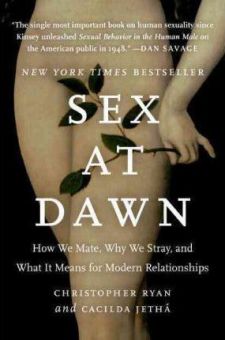
Sex at Dawn – Christopher Ryan, Cacilda Jetha
(Buy from Amazon; Buy from The Book Depository)
“Sex at Dawn challenges conventional wisdom about sex in a big way. By examining the prehistoric origins of human sexual behavior the authors are able to expose the fallacies and weaknesses of standard theories proposed by most experts. This is a provocative, entertaining, and pioneering book. I learned a lot from it and recommend it highly.” — Andrew Weil, M.D.
“Sex at Dawn irrefutably shows that what is obvious—that human beings, both male and female, are lustful—is true, and has always been so…. The more dubious its evidentiary basis and lack of connection with current reality, the more ardently the scientific inevitability of monogamy is maintained—even as it falls away around us.” — Stanton Peele, Ph.D.
A controversial, idea-driven book that challenges everything you (think you) know about sex, monogamy, marriage, and family. In the words of Steve Taylor (The Fall, Waking From Sleep), Sex at Dawn is “a wonderfully provocative and well-written book which completely re-evaluates human sexual behavior and gets to the root of many of our social and psychological ills.”
Disclaimer: This page contains affiliate links that may provide monetary compensation to help support the Whole Guidance Vision of Creating a Happy and Healthy Planet should you make a purchase. We very much appreciate and thank you for your support.
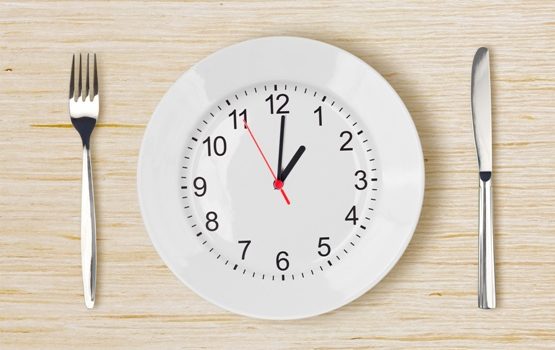
“The light of the world will illuminate within you when you fast and purify yourself.”
— Mahatma Gandhi
Like most people I was taught that breakfast is the most important meal of the day and skipping it was a bad idea. Without breakfast you get tired later in the day, you cannot focus or think clearly, your hunger grows, and you will get health issues including weight gain, metabolic diseases, and malnutrition.
With this is in mind I grew up eating cereal with milk or toast with hot chocolate for breakfast and I did this every single morning for decades.
However, after learning about holistic, functional, and ancestral health practises and applying these to my life in order to overcome personal health challenges, my breakfast ritual has changed dramatically where I no longer eat breakfast till late in the day and some days I don’t eat at all.
CLICK HERE TO LEARN WHAT ARE THE MOST NUTRIENT DENSE REAL FOODS
This is called intermittent fasting (IF) where you fast for a certain period of time and then eat within a specific time window and what I’ll be exploring in this article.
A typical fast differs from IF as it lasts for a prolonged period of time, usually several days or a few weeks, without eating food and usually involves drinking only water during the fast, aka a water fast.
Why would you intentionally starve yourself? Well it is during times of fasting that your body can perform critical maintenance and repair functions that cannot be executed when in a fed or un-fasted state.
Benefits to Fasting
- Resets growth, appetite, stress, and sex hormones to healthy levels
- Switches your body to burn fat rather than sugar as fuel
- Increases human growth hormone production
- Reduces inflammation and oxidative stress
- Normalises HDL, LDL, and triglyceride levels
- Promotes healthier body composition
- Supports body’s innate ability to heal from sickness and disease
- Improves cognitive function including learning, memory, and focus
- Elevates energy (yes, more energy by not eating!)
- Less time cooking, cleaning, and more time working on your goals
Most of these benefits come from a process called autophagy. During autophagy each of your cells seek out all the junk, microbes, and other toxins within the cell and recycle them into new building blocks for the cell. Whatever is leftover or unusable gets excreted as waste.
If you eat frequently and don’t give your body enough time to switch on autophagy and recycle the trash then this junk and your risk of infection grows and grows and grows causing many health issues.
Imagine if you never took the trash out of your house or if the garbage truck never showed up for weeks. Not only would your house begin to fill up with rubbish leaving you no space to move, work, and play, but you’d also get flies, maggots, and bugs taking over your home, and of course don’t forget about the smell!
This is what’s happening when you eat all the time and don’t have a long enough period without food. It is when you fast for periods of at least 12 hours that your cells have time to switch on the autophagy process and clear out the trash, the toxins, and the harmful microorganisms.
Just as it’s easier for you to move and think in an organised house or office space, after autophagy your cells become more efficient and more effective at running metabolic processes giving you more energy and clarity of thought.
Am I saying you should go on a strict water fast for days on end to get even more energy and health benefits? No, as there is a tipping point to where your cells will begin to become malnourished and your body switches to a state of hibernation and stasis. A prolonged water fast is definitely an option to consider though, if you are dealing with a chronic health condition.
A general guideline is the more metabolically deranged you are or to use the more acceptable term, if you have metabolic syndrome, the longer the fast should be. For example a water fast of 3-14 days under medical supervision would suit people with obesity, high blood pressure, high triglycerides, high blood sugar, or high amounts of small LDL cholesterol particles.
A smarter and more sustainable way to fast for anyone looking to improve and maintain health and performance markers is to experiment with intermittent fasting, with set periods of fasting and feeding and being able to change these feeding windows to suit your individual goals. You get all the benefits of going on a prolonged water fast, without having to do an actual water fast.
Before I give my recommended IF protocols there are certain groups of people that should not do any kind of fasting:
- Children
- Pregnant/breastfeeding women
- People with cortisol dysregulation (chronic stress)
- Severely underweight individuals
If you fall into one of these categories undergoing an IF protocol has the potential to cause more stress to your body than it can handle.
Types of Intermittent Fasting
Here is a list of intermittent fasting protocols you can play with in order of difficulty (the difficulty of any change in diet comes down to your personal perception of the diet and the changes that you need to make, so as with anything in life your mileage may vary).
12:12 (Fast window 12 hours, Feed window 12 hours)
This is a daily fast lasting 12 hours leaving the other 12 hours to eat. During the fast you can have water (optionally with lemon juice or apple cider vinegar), black coffee, and teas without nothing added.
This is the most natural and easiest to stick to out of all the IF protocols.
I recommend finishing your last meal by 8p at the latest and not eating till 8a in the morning. For example, if you finished your last meal at 6p, you wouldn’t eat your first meal until around 6a the next day.
16:8 (Fast window 16 hours, Feed window 8 hours)
Similar to 12:12, but with a 16 hour daily fast with an eight hour eating window. During the fast you can have water (optionally with lemon juice or apple cider vinegar), black coffee, and teas with nothing added.
Personally I find 16:8 to be the simplest way to eat and is my go-to IF protocol for getting quick results in terms of changing body composition and reducing the waistline.
Again I recommend finishing your last meal by 8p at the latest and not eating until 12p. For example, if you finished your last meat at 6p you wouldn’t eat your first meal until around 10a.
The Fast Diet / The 5:2 Diet (Feed window 5 days, Fast window 2 days)
With the Fast Diet you eat normally for five days of the week and then fast for two days. The two fasting days can be in a row or split up during the week.
During the two fasting days you are allowed to eat up to 500-600 calories anytime during the day.
Eat-STOP-Eat (Feed window 5/6 days, Fast window 1 or 2 days)
Another weekly IF protocol involving eating normally for five or six days and fasting for one or two days a week. During the fast you can have water, black coffee, and teas with nothing added.
The Warrior Diet (Fast both morning and afternoon, Feast evening)
This diet involves eating like some of our ancestors where you fast during the day and feast on your ‘hunt’ during the evening.
During the day as well as black coffee and teas with nothing added, you can have a high quality whey protein shake, but only post high intensity resistance or sprint training. Also berries and non-starchy vegetables are okay to eat during your fast.
In the evening is when you eat one large meal to satisfy your hunger.
Alternate Day (Fast window every other day)
Eat normally one day; eat nothing the next.
During the fasting day you can have water, black coffee, and teas with nothing added.
Note Well
It should not have to be said, but I’ll say it anyway – with all of these IF protocols food quality is the key to success. Eat real food and make those calories you eat as nutrient dense as possible.
Also with any dietary protocol remember you don’t have to be strict. You must experiment with each and find what works for you and make it your own or move on to something else.
For example I’ve settled on using the Warrior diet as a template. My IF protocol is my own type of Warrior diet where I have two cups of coffee and cream/ghee with a little whey powder in the morning, drink a lot of water (one with ACV) throughout the day, and then have one big meal in the evening full of vegetables and some meat or fish.
For more information about how to use fasting to heal I highly recommend the book The Complete Guide to Fasting by Dr Jason Fung and Jimmy Moore.
Two other books that incorporate IF into a holistic healthy lifestyle are The Wild Diet by Abel James and The Bulletproof Diet by Dave Asprey.
Summary
Yes breakfast is still the most important meal of the day… to skip! It is the timing, when you break your fast, that makes breakfast the most important meal of the day.
Breakfast doesn’t have to be at the beginning of the day. Remember breakfast means to break a fast or simply the first meal of the day. You can skip breakfast or fast for the entire day – this is called intermittent fasting.
By implementing an intermittent fasting protocol you will improve your health and gain extra time in your day to get after your dreams.
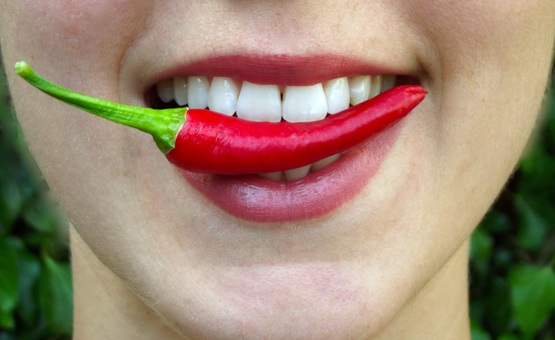
“The biology of pain is never really straightforward, even when it appears to be.”
— Lorimer Moseley, PhD FACP
I started to experience chronic pain in my lower back in my mid-20s. This was when I began working full-time in IT support and the desk job meant a lot more sitting compared to my previous teaching position.
Was my back pain caused by a change in my daily posture? No. But it was the proverbial straw that broke the camel’s back. Meaning the highly inflammatory lifestyle I was living was the actual underlying cause of the pain, but the change in job and how I moved pushed my back over the edge into the pain-zone.
After learning about inflammation and learning how to reduce it through lifestyle changes my back pain dissappeared.
CLICK HERE TO LEARN WHAT ARE THE BEST FOODS TO REDUCE INFLAMMATION
Back pain is one of the leading causes of disability and about 80% of people will experience some form of back pain during their lifetime. Whether it’s acute, lasting less than six weeks, or chronic with some people living with it for years, back pain will negatively impact your ability to work, to play, and to function in society, i.e. have fun and enjoy life.
Well-known causes for back pain include:
- Sedentary lifestyle
- Poor posture
- Repetitive movement
- Faulty movement pattern
- Injury
What I’ll be exploring here are some unfamiliar causes for back pain all relating to your mouth.
But before I get into the connection between your mouth and your back health I’ll talk little bit about pain in general.
Pain is your body’s way of communicating to you that something is malfunctioning and needs your attention. This pain and malfunction is a result of inflammation caused by some type of stressor. This stress could be physical, mental/emotional, or biochemical/physiological. Whatever the stress, the area it manifests in your body will become inflamed and this activates your immune system where it will begin to eliminate foreign material and infections, as well as clean up and repair old and damaged tissue.
If this stress becomes chronic the inflamed organs, gland, or tissue will never have a chance to heal, causing you to experience chronic pain.
How Your Mouth Contributes to Back Pain
One way your mouth can contribute to back pain is with the foods you eat. By eating a pro-inflammatory diet which causes stress in your gastrointestinal tract. This stress causes gut irritation and gut inflammation. How does this relate to back pain?
Your organs and muscles share the same pain nerve fibres. Your heart for example shares these fibres with your arms, which is why you’ll experience pain, numbing, and tingling in your arms during a heart attack. Your stomach, liver, small intestines, and colon innervate with your abdominal and back muscles. If you experience a lot of gas, bloating, and abdominal distension, these are symptoms that your digestive organs are stressed and inflamed and this can cause back pain due to the firing of pain nerve fibres connecting these organs to your back muscles.
Another way your mouth can cause back pain comes down to dental health. The health of your teeth has a massive impact on the health of the rest of your body as your teeth are directly linked to all your major organs by way of acupuncture meridians. Meridians are energy channels or pathways in which energy flows. Each of your organs, glands, and tissues connect to specific meridians. Many of these meridians end in teeth, therefore connecting specific organs to each tooth.
If you have swollen gums, tooth decay, mercury or inorganic fillings, incorrectly fitted orthodontics, root canals, malocclusion, or missing teeth, this will cause a disruption or blockage in your meridians, causing malfunction and problems with the organ(s) connected to that meridian. When the meridians connected to your gut are disrupted due to poor dental health, this can potentially cause gut inflammation and back pain.
You can find a meridian tooth chart at Ora Wellness mapping out teeth with their related meridians and organs.
Last thing I’ll mention regarding your mouth and back pain is how you’re breathing.
Chronic mouth breathing, particularly inhaling through the mouth, can activate the sympathetic nervous system, turning on your body’s stress response. The stress response creates a hormonal cascade where anabolic/growth and repair hormones are suppressed due to the high amounts of catabolic/breaking down and stress hormones circulating in your body. This isn’t an issue if the stress is acute and short-lived, but if the stress is ongoing this chronic catabolic state will increase inflammation and reduce healing of your gut, and healing of your back muscles, tendons, and ligaments.
The more stressed and catabolic and inflamed your body becomes, the longer your back pain will persist.
Your Mouth and Healing Back Pain
Healing back pain takes a holistic approach. Standard ways to heal from back pain include moving and stretching your body, and visiting a chiropractor or acupuncturist or physiotherapist or all of the above.
Here I share three mouth-related ways to reduce inflammation and increase meridian flow, and when integrated with other healing modalities your back pain will reduce significantly and potentially disappear.
1. Eat an Anti-Inflammatory Diet
By eating less pro-inflammatory foods that trigger gut irritation and inflammation you reduce your chances of getting gas, bloating, distension, abdominal cramps, and back pain.
An anti-inflammatory diet consists of whole real foods from plant and animal sources. This means local organically grown vegetables and fruit, and meat from animals raised in their natural habitat eating their natural diet.
More importantly an anti-inflammatory diet removes industrial seed oils and processed and refined sugars and grains, which are two of the most inflammatory and acidic foods in existence.
Two real food diet books I highly recommend are Practical Paleo by Diane Sanfilippo and Nourishing Traditions by Sally Fallon and Mary Enig.
2. Detoxify Your Teeth
Use non-toxic sulfate-free and fluoride-free organic oral care products and stop using anti-microbial mouth washes like Listerine as these upset the good-to-bad ratio of microorganisms in your mouth.
Remove any metal and inorganic fillings you might have. When it comes to replacing mercury or silver fillings be sure to find a holistic biological dentist. If mercury fillings are not removed properly you could find yourself getting a toxic load of mercury in your system creating more health problems.
A root canal is a cesspool of pathogenic microorganisms and their toxic byproducts. If you have a root canal it might pay to get yours looked at by a holistic biological dentist.
To find a holistic biological dentist visit the International Academy of Oral Medicine and Toxicology website as well as the Mercury Safe Dentists website.
3. Breathe diaphragmatic belly breaths through your nose
Your nose has parasympathetic nerve endings that are stimulated every time you inhale. By inhaling through your nose you activate the parasympathetic nervous system which puts you in a calm, connect, rest, and digest state.
Each time you expand and contract your diaphragm and belly you are giving your internal organs (including your gut) a nice little massage improving blood and lymph flow, which helps with nutrient absorption and waste removal.
Belly and nose breathing puts your body into an non-stressed anabolic state of growth and repair, reducing inflammation and pain in your back.
Summary
It is true that back pain can be a symptom of physical/biomechanical damage and injury to your back muscles, tendons, ligaments, and lumbar spine.
However, it is also true that back pain can come from physiological/biochemical stress due to poor diet, poor dental health, and incorrect breathing patterns. By eating real food, removing toxins from your mouth, and breathing correctly, you will reduce the amount of stress and inflammation contributing to your back pain.
